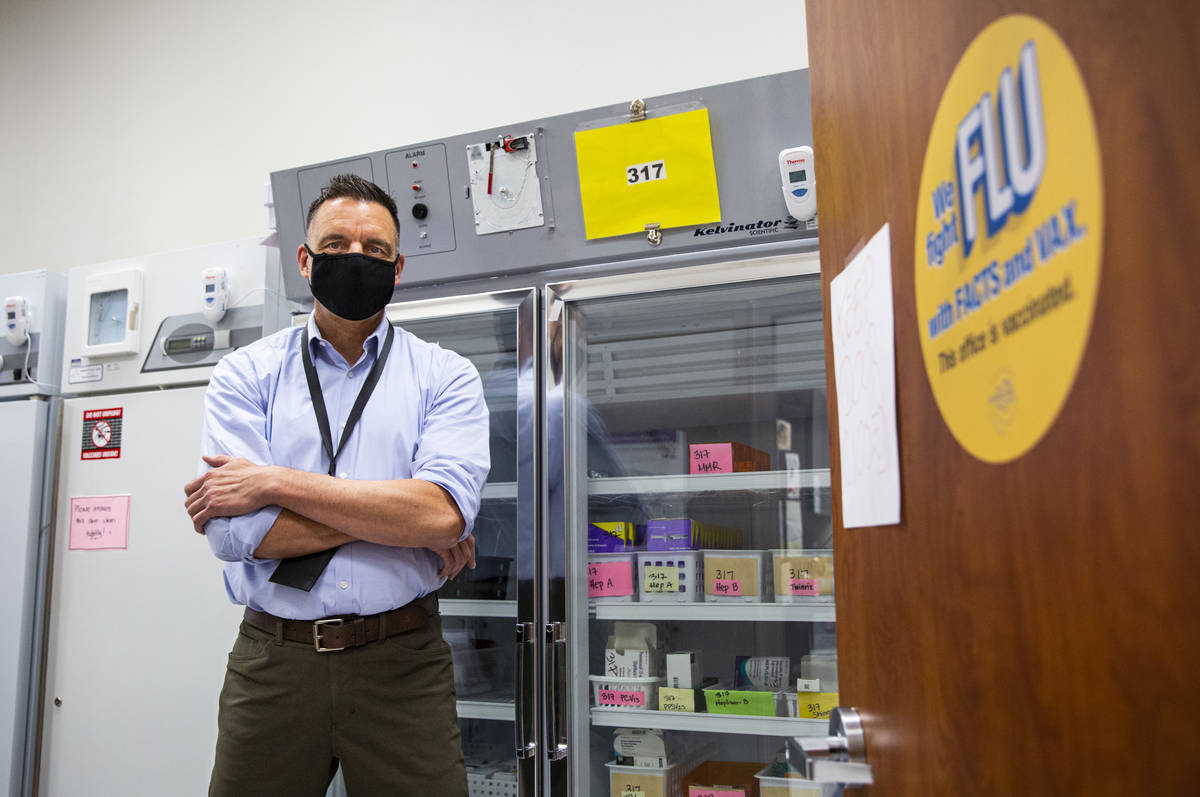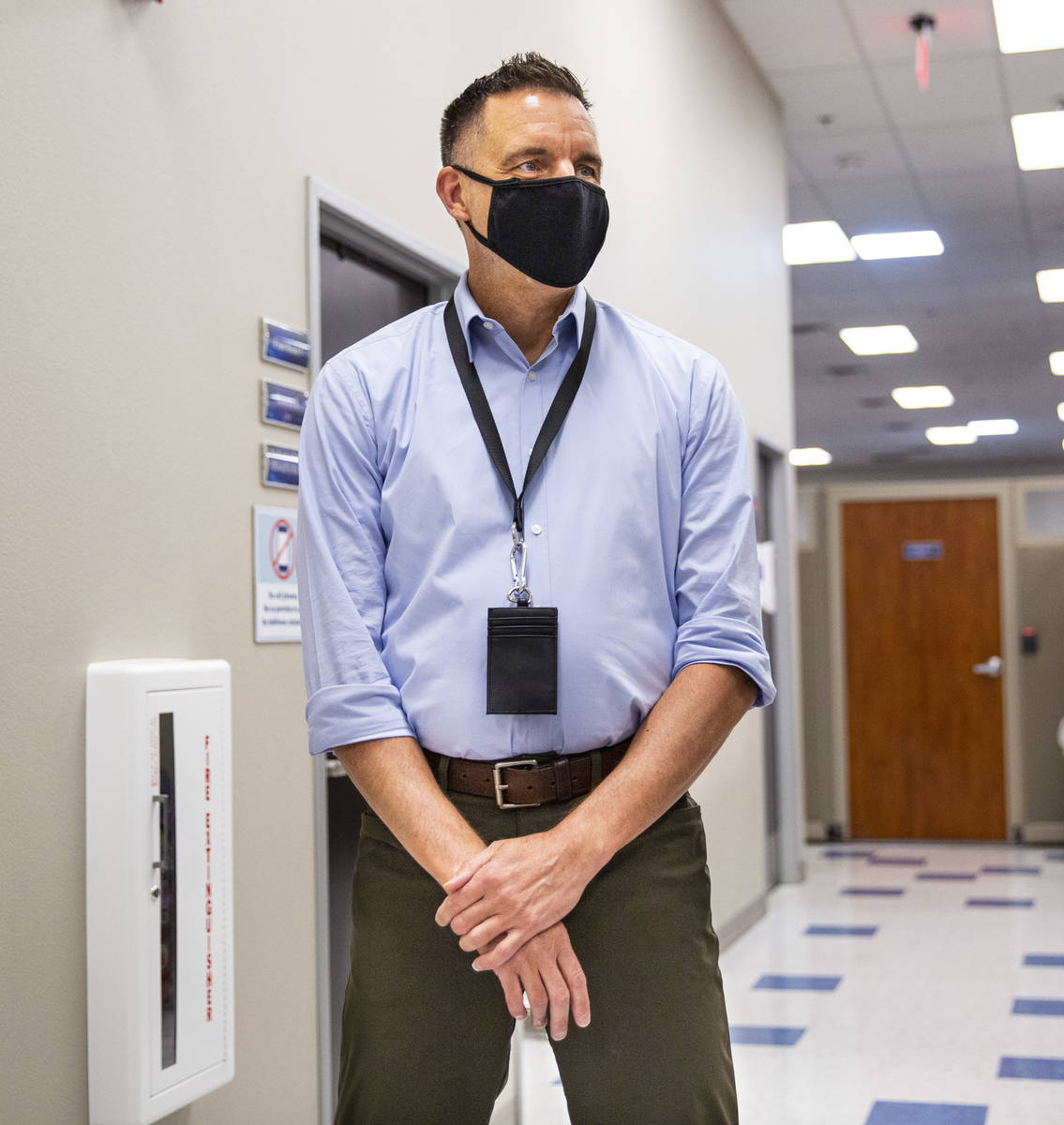What happens when COVID-19 and flu converge? We’ll soon find out.
With no signs of the COVID-19 pandemic receding anytime soon, more trouble can be seen on the horizon with the approach of flu season.
What will happen when hospitals, already stressed by high numbers of patients with the coronavirus, have to also contend with an influx of flu cases? At the height of flu season, hospital resources typically are strained, even without the confluence of the two diseases.
“We anticipate a great strain on hospitals as flu converges with COVID-19,” said Amy Shogren with the Nevada Hospital Association. “We are already hearing of cases of flu in our hospitals.”
Yet despite the very real concern surrounding this convergence, there is some reason for optimism that this flu season could be milder than usual, which if borne out would be a silver lining to the coronavirus crisis.
Two birds, one stone
One mitigating factor for the upcoming influenza season is that the measures being taken to curb the coronavirus — wearing masks, social distancing, staying at home — also work to protect against the flu.
“This is going to be a fascinating flu season because the things that we are telling people to do will also protect them against influenza,” said Brian Labus, an assistant professor at UNLV’s School of Public Health.
“It’s really difficult to say how this is going to look because our behaviors have completely changed,” said Labus, an epidemiologist and biostatistician who is a member of the governor’s medical advisory team.
“So I wouldn’t expect a typical flu season because our behavior is not typical.”
If activity on the bottom side of the globe is any indication, it could indeed be a very unusual flu season in the U.S., where most flu cases usually occur between October and May.
The flu season in the Southern Hemisphere, which typically runs from April until September, has been very mild, especially in comparison to the previous season. A key reason is that many areas have been under lockdown because of the coronavirus, reducing opportunities for transmission of disease.
“We see how there’s been a tremendous difference from one of the worst flu seasons for the Southern Hemisphere to one that is practically nonexistent,” said Dr. David Weismiller, a professor at the UNLV School of Medicine.
Australia reported 185 laboratory-confirmed cases of flu in the last week of July, compared with nearly 71,000 in the same week the previous year, according to Australia’s National Notifiable Disease Surveillance System.
“The one significant change is the social distancing and the masks,” Weismiller said, noting that lockdowns in Australia have been stricter than those in effect in the U.S. Still, he added, “We could potentially see a better flu season in the United States secondary to those measures as we continue them.”
‘A very healthy respect’
Another variable in determining the severity of flu season here in Nevada and the U.S. will be how many people get their flu shot, health authorities say. The percentage of Nevadans over the age of 6 months who were vaccinated against the flu was 39 percent, according data from the 2017-2018 flu season from nonprofit group Immunize Nevada. The national average was 42 percent.
But there is some hope that the fear surrounding COVID-19 could stimulate interest in getting the flu vaccine.
“I am very hopeful that people will get flu shots because their fear around COVID will translate to a very healthy respect for influenza,” said Dr. Judith Ford, Intermountain Healthcare’s medical director.
A recent survey suggests this could be the case. Amid concerns about the virus, 30 percent of adults said they were more likely to get a flu shot this year, according to a survey of 1,000 U.S. adults by United Healthcare.
During the last flu season, there were about 1,400 hospitalizations from the flu and 54 deaths in Clark County, according to data from the Southern Nevada Health District. As of Friday, there had been nearly 3,100 hospitalizations from COVID-19 and 770 deaths reported in the county.
“There’s nothing we can do right now for COVID. There is no vaccine available,” Ford said. “I’m hopeful that people will at least vaccinate themselves for the things that they can prevent.”
Development and testing of vaccines for COVID-19 are taking place at an unprecedented pace, with hopes that at least one effective vaccine could become available to those most at risk as soon as late this year. But a vaccine’s distribution in time for the flu season is far from a certainty.
Imperfect protection
Meanwhile, the flu vaccine is an imperfect one. Scientists must predict months in advance of flu season which strains of the virus will be circulating. The success in making the predictions varies from year to year, and in some seasons, the vaccine is not a great match for the strains.
But even when a person who was vaccinated becomes sick, the illness probably will be less severe, said Karen Duus, an associate professor in microbiology and immunology at Touro University Nevada in Henderson. That is the “unspoken advantage of the vaccine.”
“You still feel like crap for a week or two, but you don’t end up going to the hospital,” Duus said. What people don’t want to have happen is that they get the flu on top of COVID-19, which she described as a “horrifying thought.”
“If you have a mild COVID and you catch flu on top of that, what does that do? We don’t know,” said Duus, a virus researcher.
From a public health perspective, it could be more important than ever to get a flu shot.
“The more folks that are vaccinated against influenza, the less influenza disease we’re going to have out in the population, and therefore that’s going to help mitigate any impact on our health care system,” said Dr. Cortland Lohff, acting chief medical officer for the Southern Nevada Health District.
“If we can keep the influenza at bay, then we can really focus our efforts on responding to the ongoing COVID pandemic,” he said.
The health district plans to start giving flu shots in September. Many medical practitioners advise getting a flu shot in September or October to have protection throughout the season.
Weismiller is urging his patients to think strategically about getting a shot. With some businesses shut down or having their employees work from home, fewer will be offering on-site vaccinations to their employees. So he advises patients making a trip to the pharmacy, for example, to consider getting their flu shot while they’re there.
It is especially important for older people and those with underlying health conditions to get vaccinated against the flu, health authorities say. They are at higher risk of having complications not only from flu but from COVID-19.
Virtual school
Children also are at risk for becoming seriously ill from the flu, more so than from COVID-19, current evidence suggests.
There were 166 children in the U.S. who died from the flu in the past flu season, according to the CDC. During the 2009-2010 H1N1 flu pandemic, 358 flu deaths in children were reported across the country. In contrast, as of July 21, 64 children in the U.S. had died from COVID-19.
But the fact that public schools in Clark County will start the semester teaching online instead of in classrooms should help mitigate the spread of flu, Ford said.
“We would expect that all respiratory diseases would not be as bad because the little kiddies are not mixing,” she said.
The circulation in the fall and winter of multiple respiratory viruses, including those that cause colds, will complicate diagnosing respiratory infections.
“As providers we have to figure out does the patient have the flu, does the patient have COVID or does the patient have both?” Ford said.
But one consequence of the pandemic has been the increased use of telemedicine, which has allowed patients to consult their practitioners by phone or video conference.
“Now more so than ever, we are very skilled and trained in utilizing technology in the best way possible,” said Dr. Neil Gokal, a family physician with Southwest Medical Associates. “And we also have the ability to connect with patients in the safety and comfort of their homes to keep them safe from unnecessarily being exposed or exposing other people” to illness.
Combo test
To meet the demands of the flu and coronavirus convergence, the federal Centers for Disease Control and Prevention have designed a new “combo” test that will test for both influenza and the new coronavirus, which causes COVID-19, said Mark Pandori, director of the Nevada State Public Health Laboratory in Reno.
The state lab soon will be evaluating the test for use in Nevada this flu season.
“The test will be extremely useful as we enter influenza season,” the lab director said. “Since the manifestation of influenza and COVID-19 can be so similar, it will be important to be able to differentiate these infections in people.”
Contact Mary Hynes at mhynes@reviewjournal.com or 702-383-0336. Follow @MaryHynes1 on Twitter.


















